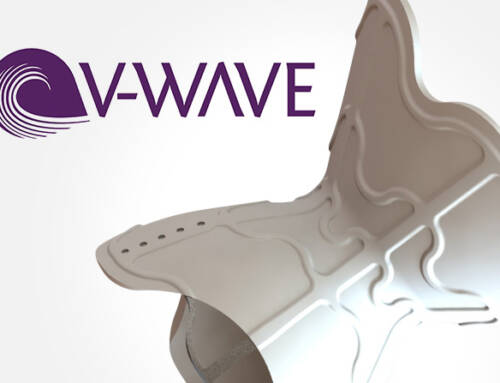New category challenges industry standards in soft tissue robotic-assisted surgery and has the potential to expand access to minimally invasive care
De Novo premarket review pathway establishes initial indication for adults undergoing colectomy procedures and lays the foundation for expansion into other abdominal procedures
LINCOLN, Neb. – February 24, 2024 – Virtual Incision Corporation announced the U.S. Food and Drug Administration (FDA) has granted marketing authorization of the MIRA™ Surgical System (MIRA), the world’s first miniaturized robotic-assisted surgery (miniRAS) device, for use in adults undergoing colectomy procedures. The device was submitted via the FDA’s De Novo Classification process, a rigorous pathway designed to classify novel medical devices with no current legally marketed predicate. FDA authorization was based in part on findings from the company’s U.S. Investigational Device Exemption (IDE) clinical study. The announcement was made by Virtual Incision’s president and chief executive officer, John Murphy, at the SAGES 5th Annual Next Big Thing Innovation Weekend in Houston.
“Today marks a turning point in surgical robotics as we have hit a significant milestone in making miniaturized robotic surgery a reality,” said John Murphy. “For more than a decade, our team has been dedicated to our core mission of making every operating room robot-ready. I’m incredibly proud to see our efforts come to fruition. We extend our gratitude to the FDA for its thoughtful review of MIRA’s technology and our clinical evidence. Whether as a complement to the existing mainframes or as a stand-alone platform, miniaturization has the potential to accelerate the adoption of robotic-assisted surgery.”
Minimally invasive surgery (MIS), a type of surgery that involves smaller incisions, has transformed the surgical care landscape and patient outcomes through decreased pain, reduced complications, and shorter recovery time.1 The introduction of robotic-assisted surgery has further expanded the use and effectiveness of MIS for complex procedures, offering surgeons more precision and control than what is possible with conventional techniques. Despite its advantages, roughly 90 percent of U.S. operating rooms (ORs) are still without access to the technology,2 most often due to complex logistics such as dedicated operating room space, specially trained staff, added steps during setup and turnover, and a substantial cost for the equipment. The “in-a-tray” form factor of miniRAS has the potential to overcome these challenges and could impact millions of U.S. patients each year.
MIRA’s innovative tray-to-table design could offer healthcare facilities the advantages of robotic surgery without requiring them to organize the OR around the device, a current challenge of existing mainframe surgical robots. MIRA’s compact, approximately two-pound (less than one kg) framework is portable and designed to minimize setup time, which could enable any OR to be robot ready within minutes.
“Colectomy is one of the most complex multi-quadrant abdominal procedures with nearly 50 percent still being performed as open surgery.3 Data from our IDE clinical study demonstrated that MIRA can successfully be used to mobilize the colon in a minimally invasive way,4” said Piet Hinoul M.D., Ph.D., chief medical officer of Virtual Incision. “Starting with a difficult multi-quadrant procedure like a colectomy presents an exciting opportunity for us to address a high unmet need before we expand into other indications. We’re thankful to the investigators and patients who participated in our IDE clinical study that propelled us to marketing authorization.”
Virtual Incision will begin commercialization of MIRA through its First Access Program in centers to be selected across the United States. The company will ramp up MIRA’s production and expand to additional sites over time.
MIRA’s broader commercialization and expansion of its roadmap for future indications includes gynecology, general surgery, urology and other soft tissue and solid organ surgery. Studies of MIRA in gynecological procedures are planned in 2024. Additionally, a new iteration of the technology tailored to general surgery is in design and expected to be used in a first-in-human study outside the U.S. later this year.
About Virtual Incision
Virtual Incision is on a mission to simplify robotic-assisted surgery (RAS), so more patients and their surgeons can access its benefits every day. Headquartered in Lincoln, Nebraska, and holding over two hundred patents and patent applications, the company developed MIRA, the first-of-its-kind miniature RAS system. Virtual Incision’s goal is to make every operating room RAS-ready. For more information, visit our website or follow us on LinkedIn and X.
About the MIRA Surgical System
MIRA is the world’s first miniaturized robotic-assisted surgery (RAS) system. Its small, sleek form factor is designed to offer the benefits of RAS during colectomy procedures without the logistical inefficiencies of traditional mainframe robotics. The easily accessible device weighs approximately two pounds (less than one kg) and offers internal triangulation with shoulders, arms, and infinite wrist roll inside of the body. It can be used in any operating room – a dedicated mainframe room is unnecessary. With its drape- and dock-free design and portability, MIRA is quick to set up, clean up, and move between cases. Its conveniently accessible design positions it to be used as a standalone system or a complementary tool for facilities that already own a mainframe. With MIRA, every operating room is RAS-ready.
Important safety information
The MIRA Surgical System is intended for prescription use only. Patients should talk to their doctor to decide if surgery with a MIRA Surgical System is right for them. For important safety information, indications for use, risks, and warnings, please refer to www.virtualincision.com/safety-information.
Cautionary Note Regarding Forward-Looking Statements
This communication contains statements that constitute “forward-looking statements” within the meaning of the Private Securities Litigation Reform Act of 1995. Forward-looking statements include but are not limited to, statements regarding our plans, beliefs, expectations, assumptions, and other statements that are not necessarily historical facts. You are cautioned that these forward-looking statements are only predictions and involve risks and uncertainties. Further, any forward-looking statement speaks only as of the date on which it is made, and we do not intend to update or revise any forward-looking statements. This communication also contains market data related to our business and industry which includes projections that are based on several assumptions we believe are reasonable and most significant to the projections as of the date of this communication. If any of our assumptions prove to be incorrect, our actual results may significantly differ from our projections based on these assumptions.
CONTACT:
Shay Smith
Health+Commerce
(707)971‑9779
References
1. Reza MM, Blasco JA, Andradas E, Cantero R, Mayol J. Systematic review of laparoscopic versus open surgery for colorectal cancer. Br J Surg. 2006 Aug;93(8):921–8.
2. Hazan, A., Perse, J., Coover, P. June 2022. State of the Robotics Surgery Market. Goldman Sachs.
3. Sheetz KH, Norton EC, Dimick JB, Regenbogen SE. Perioperative Outcomes and Trends in the Use of Robotic Colectomy for Medicare Beneficiaries From 2010 Through 2016. JAMA Surg. 2020 Jan 1;155(1):41–49.
4. Virtual Incision data on file
Disclosure and Important Safety Information
The MIRA Surgical System is intended for prescription use only. Patients should talk to their doctor to decide if surgery with a MIRA Surgical System is right for them. Patients and doctors should review all available information on nonsurgical and surgical options and associated risks in order to make an informed decision.
Serious complications may occur in any surgery, including minimally invasive surgery with the MIRA Surgical System, up to and including death. Serious risks include, but are not limited to, injury to tissues and organs, and/or conversion to other surgical techniques which could result in a longer operative time and/or complications.
For important safety information, including surgical risks and considerations, please also refer to www.virtualincision.com/safety-information. For the product’s indications for use, risks, full cautions, and warnings, please refer to the associated user manual(s).
Individual outcomes may depend on a number of factors, including but not limited to patient characteristics, disease characteristics, surgeon, and/or hospital experience.
MIRA Surgical System Precaution Statement
The demonstration of safety and effectiveness for the representative specific procedures was based on evaluation of the MIRA Surgical System as a surgical device and did not include evaluation of outcomes related to the treatment of cancer (overall survival, disease-free survival, local recurrence) or treatment of the patient’s underlying disease/condition. Device usage in all surgical procedures should be guided by the clinical judgment of an adequately trained surgeon.
# # #





